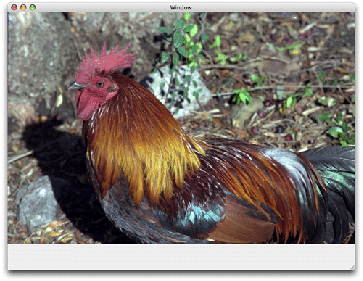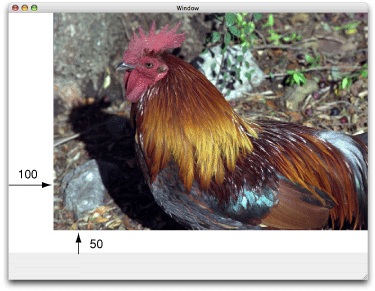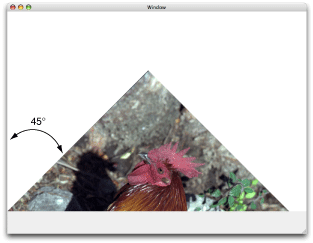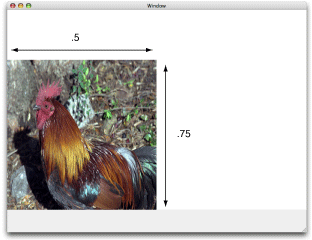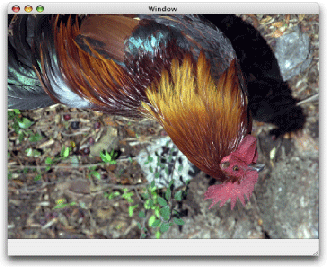Drawing PDF is piece of cake, not much CUP and Memory, but drawing a bitmap image that's memory consuming thing, so please be careful when you covert it on a iPhone.
1. Covert a PDF to image
-(NSData *)extractFromPdf:(NSURL *)url forRect:(CGRect)rect {
//===============================================================
// Load the PDF in memory once
//===============================================================
if (![url.absoluteString isEqualToString:self.pdfUrl.absoluteString]) {
[self releasePdfResource];
CGPDFDocumentRef pdfRef = CGPDFDocumentCreateWithURL((__bridge CFURLRef)url);
if (CGPDFDocumentGetNumberOfPages(pdfRef) == 0) {
CGPDFDocumentRelease(pdfRef);
return nil;
}
self.pdfUrl = url;
pdf = pdfRef;
pdfPage = CGPDFDocumentGetPage(pdfRef, 1);
}
//===============================================================
// Draw PDF to layer
//===============================================================
CGSize layerSize = CGSizeMake(rect.origin.x + rect.size.width, rect.origin.y + rect.size.height);
CGContextRef bitmapContext = PWCreateBitmapContext(rect.size.width, rect.size.height);
CGLayerRef layer = CGLayerCreateWithContext(bitmapContext, layerSize, NULL);
CGContextRef layerContext = CGLayerGetContext(layer);
CGContextSaveGState (layerContext);
CGContextDrawPDFPage(layerContext, pdfPage);
CGContextRestoreGState (layerContext);
// Draw layer to bitmap
CGContextSaveGState (bitmapContext);
CGRect tileRect = CGRectMake(-rect.origin.x,
-rect.origin.y,
rect.origin.x + rect.size.width,
rect.origin.y + rect.size.height);
CGContextDrawLayerInRect(bitmapContext, tileRect, layer);
CGLayerRelease(layer);
CGContextRestoreGState (bitmapContext);
//===============================================================
// Release
//===============================================================
CGImageRef bitmap = CGBitmapContextCreateImage(bitmapContext);
UIImage *image = [UIImage imageWithCGImage:bitmap];
CGImageRelease(bitmap);
CGContextRelease (bitmapContext);
NSData *imageData = UIImagePNGRepresentation(image);
return imageData;
}
2. Covert a PDF to image with scale and rotation
-(NSData *)extractFromPdf:(NSURL *)url
forRect:(CGRect)rect
withScalePdfSize:(CGSize)scalePdfSize
rotationAngle:(float)rotation {
//===============================================================
// Load the PDF in memory once
//===============================================================
if (![url.absoluteString isEqualToString:self.pdfUrl.absoluteString]) {
[self releasePdfResource];
CGPDFDocumentRef pdfRef = CGPDFDocumentCreateWithURL((__bridge CFURLRef)url);
if (CGPDFDocumentGetNumberOfPages(pdfRef) == 0) {
CGPDFDocumentRelease(pdfRef);
return nil;
}
self.pdfUrl = url;
pdf = pdfRef;
pdfPage = CGPDFDocumentGetPage(pdfRef, 1);
}
//===============================================================
// Prepare affine transform
//===============================================================
CGRect originalPdfRect = CGPDFPageGetBoxRect(pdfPage, kCGPDFCropBox);
CGFloat scaleFactorWidth = scalePdfSize.width/originalPdfRect.size.width;
CGFloat scaleFactorHeight = scalePdfSize.height/originalPdfRect.size.height;
/*
x
|
|
|**************
|* *
|* *
|* *
|**************------y
(0, 0)
After rotate, move left with a distance of sin(angle)*height
*
* *
|* *
*| *
* | *
* | *
* | *
* | * (angle)
-+++++*--------------y
(0, 0)
*/
CGAffineTransform centerTransform;
double angle = rotation * M_PI / 180;
if (rotation < 0) {
centerTransform = CGAffineTransformMakeTranslation(-sin(angle)*originalPdfRect.size.height*scaleFactorHeight, 0);
} else {
centerTransform = CGAffineTransformMakeTranslation(0, sin(angle)*originalPdfRect.size.width*scaleFactorWidth);
}
CGAffineTransform rotateTransform = CGAffineTransformRotate(centerTransform, -angle);
CGAffineTransform scaleTransform = CGAffineTransformScale(rotateTransform, scaleFactorWidth, scaleFactorHeight);
//===============================================================
// Create bitmap context and alloc the size of memory
//===============================================================
int pixelsWide = rect.size.width+rect.origin.x;
int pixelsHigh = rect.size.height+rect.origin.y;
CGContextRef bitmapContext = PWCreateBitmapContext(pixelsWide, pixelsHigh);
if (bitmapContext== NULL) {
return NULL;
}
//===============================================================
// Draw PDF to layer
//===============================================================
CGLayerRef layer = CGLayerCreateWithContext(bitmapContext, rect.size, NULL);
CGContextRef layerContext = CGLayerGetContext(layer);
CGContextSaveGState (layerContext);
CGContextConcatCTM(layerContext, scaleTransform);
CGContextDrawPDFPage(layerContext, pdfPage);
CGContextRestoreGState (layerContext);
// Draw layer to bitmap
CGContextSaveGState (bitmapContext);
CGContextDrawLayerInRect(bitmapContext, rect, layer);
CGContextRestoreGState (bitmapContext);
//===============================================================
// Release
//===============================================================
CGLayerRelease(layer);
CGImageRef bitmap = CGBitmapContextCreateImage(bitmapContext);
UIImage *image = [UIImage imageWithCGImage:bitmap];
NSData *imageData = UIImagePNGRepresentation(image);
CGImageRelease(bitmap);
CGContextRelease (bitmapContext);
return imageData;
}


